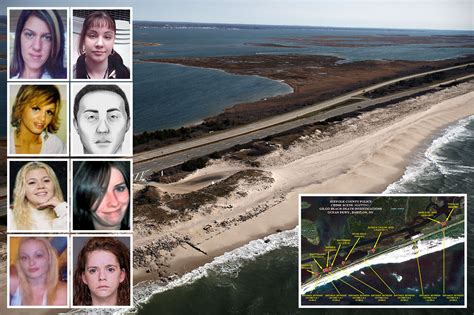
Thirteen bodies have been discovered within a 70-mile radius in New England, prompting an intense investigation led by authorities and drawing national attention, with legal analyst Ashleigh Banfield examining the complexities of the case.
Law enforcement agencies across multiple jurisdictions in New England are coordinating efforts to investigate the grim discovery of thirteen bodies found within a 70-mile radius, a situation that has sparked fear and concern throughout the region. The investigation, which involves local, state, and potentially federal authorities, is focused on determining whether the deaths are connected and if foul play is involved. The case has garnered significant media attention, with legal analyst Ashleigh Banfield providing in-depth analysis and commentary on the investigation’s progress.
The discoveries have occurred over an unspecified period, creating a sense of urgency among investigators to identify the victims and uncover any potential links between the cases. The 70-mile radius encompasses parts of multiple states, including Massachusetts, Connecticut, and Rhode Island, complicating the investigative process due to differing state laws and jurisdictional boundaries. Law enforcement is meticulously examining each case, gathering forensic evidence, interviewing potential witnesses, and analyzing data to establish timelines and potential connections.
The investigation is multifaceted, addressing several key questions: Are the deaths accidental, natural, or the result of foul play? If the deaths are homicides, are they the work of a single perpetrator, a group, or unrelated individuals? What are the identities of the victims, and can their backgrounds provide clues to the circumstances surrounding their deaths?
Authorities are proceeding cautiously, acknowledging the sensitivity of the situation and the need to avoid premature conclusions that could hinder the investigation. The coordination between different law enforcement agencies is crucial to ensure that all available resources and expertise are utilized effectively. The investigation involves forensic experts, homicide detectives, and specialized units dedicated to analyzing crime patterns and identifying potential suspects.
Adding to the complexity is the involvement of legal analyst Ashleigh Banfield, who has been providing commentary and insights into the legal and investigative aspects of the case. Banfield’s analysis includes examining the challenges faced by law enforcement, the legal hurdles involved in prosecuting potential suspects, and the potential implications of the case for the communities affected. Her expertise has helped to shed light on the intricate details of the investigation and provide a broader understanding of the legal processes involved.
Investigation Details
The investigation into the thirteen deaths is being conducted with utmost diligence, employing a range of forensic techniques and investigative strategies. Law enforcement agencies are collaborating to share information and resources, ensuring a comprehensive and coordinated approach. The primary goals of the investigation are to identify the victims, determine the cause and manner of death for each individual, and establish whether there are any connections between the cases.
Forensic Analysis: Forensic teams are meticulously examining each crime scene, collecting evidence such as DNA, fingerprints, and trace materials. The evidence is then analyzed in forensic laboratories to identify potential suspects and establish links between the victims and their surroundings. Autopsies are being performed to determine the cause and manner of death, providing crucial information about the circumstances surrounding each individual’s demise.
Witness Interviews: Investigators are conducting extensive interviews with potential witnesses, including residents, family members, and acquaintances of the victims. These interviews aim to gather information about the victims’ backgrounds, activities, and any potential leads that could assist in the investigation. The process of interviewing witnesses can be challenging, as individuals may be reluctant to come forward or may have incomplete or inaccurate information.
Data Analysis: Law enforcement agencies are utilizing advanced data analysis techniques to identify patterns and connections between the cases. This involves examining crime statistics, mapping crime locations, and analyzing communication records to identify potential suspects and establish timelines. Data analysis can help investigators to narrow their focus and prioritize leads, making the investigation more efficient and effective.
Interagency Coordination: The investigation involves close collaboration between local, state, and potentially federal law enforcement agencies. This coordination is essential to ensure that all available resources and expertise are utilized effectively. Regular meetings and information-sharing sessions are being held to keep all agencies informed of the latest developments and to coordinate investigative efforts. The involvement of federal agencies, such as the FBI, may be necessary if the investigation reveals interstate connections or potential violations of federal law.
Legal Perspectives by Ashleigh Banfield
Ashleigh Banfield, a seasoned legal analyst, has been closely following the developments in the New England case, providing valuable insights and commentary on the legal aspects of the investigation. Her analysis has focused on the challenges faced by law enforcement, the legal hurdles involved in prosecuting potential suspects, and the potential implications of the case for the communities affected.
Legal Challenges: Banfield has highlighted the legal challenges that investigators face in building a case against potential suspects. These challenges include gathering sufficient evidence to establish probable cause for an arrest, obtaining search warrants, and ensuring that all evidence is admissible in court. The legal process can be lengthy and complex, requiring meticulous attention to detail and adherence to strict legal standards.
Prosecution Hurdles: Even if suspects are identified and arrested, prosecutors face significant hurdles in securing convictions. They must prove beyond a reasonable doubt that the suspects committed the crimes, which requires presenting compelling evidence and overcoming potential defenses. The prosecution process can be particularly challenging in cases involving multiple victims or complex forensic evidence.
Community Impact: Banfield has also emphasized the potential impact of the case on the communities affected. The discovery of thirteen bodies within a 70-mile radius has created a sense of fear and uncertainty, prompting residents to demand answers and justice. The legal process can be lengthy and emotionally draining, potentially exacerbating the trauma experienced by the victims’ families and the broader community.
“The investigation into these thirteen deaths is a complex and challenging undertaking,” Banfield stated in a recent interview. “Law enforcement agencies must work together to gather evidence, identify suspects, and build a case that can withstand legal scrutiny. The legal process will be lengthy and demanding, but it is essential to ensure that justice is served.”
Community Impact and Concerns
The discovery of thirteen bodies in such close proximity has understandably generated significant anxiety and fear among residents of the affected communities. The lack of immediate answers and the uncertainty surrounding the circumstances of the deaths have fueled speculation and concern. Local leaders and community organizations are working to provide support and reassurance to residents, while urging them to remain vigilant and cooperate with law enforcement.
Community Meetings: Town hall meetings and community forums are being organized to provide residents with updates on the investigation and to address their concerns. Law enforcement officials are attending these meetings to answer questions, provide reassurance, and encourage residents to report any suspicious activity. The meetings serve as an important platform for communication and collaboration between law enforcement and the community.
Support Services: Counseling services and support groups are being made available to residents who are struggling to cope with the emotional impact of the situation. The discovery of the bodies has triggered feelings of grief, anxiety, and fear, and it is important to provide individuals with the resources they need to process these emotions. Local mental health professionals and community organizations are working together to provide comprehensive support services.
Neighborhood Watch Programs: Efforts are being made to strengthen neighborhood watch programs and encourage residents to look out for one another. Residents are being urged to report any suspicious activity to law enforcement and to take steps to protect their homes and families. Strong neighborhood watch programs can help to deter crime and provide a sense of security in the community.
“We understand that residents are feeling anxious and concerned,” said a local community leader. “We are working closely with law enforcement to ensure that they have the resources they need to conduct a thorough investigation. We urge residents to remain vigilant, cooperate with law enforcement, and support one another during this difficult time.”
Expanded Context and Background Information
To fully understand the gravity and complexity of the situation in New England, it’s important to consider the broader context and background information surrounding the case. This includes examining historical crime trends in the region, the demographic characteristics of the affected communities, and the challenges faced by law enforcement in investigating such complex cases.
Historical Crime Trends: Analyzing historical crime trends in the region can provide valuable insights into the patterns and causes of crime. This involves examining data on homicides, missing persons, and other violent crimes to identify potential trends and risk factors. Understanding these trends can help law enforcement to allocate resources effectively and to develop targeted crime prevention strategies.
Demographic Characteristics: The demographic characteristics of the affected communities can also provide valuable context for the investigation. This includes examining factors such as population density, income levels, and ethnic diversity. Understanding these demographic characteristics can help investigators to identify potential vulnerabilities and to tailor their investigative approach to the specific needs of the community.
Challenges Faced by Law Enforcement: Investigating complex cases involving multiple victims and jurisdictional boundaries presents significant challenges for law enforcement. These challenges include coordinating investigative efforts across different agencies, gathering and analyzing forensic evidence, and managing the media and public interest. Overcoming these challenges requires strong leadership, effective communication, and a commitment to collaboration.
The geographical spread of the discoveries complicates the investigation, requiring significant resources and coordination among various law enforcement agencies. The varied terrains, ranging from densely populated urban areas to rural, isolated locations, pose logistical challenges in conducting searches and gathering evidence.
The investigation’s progress is further impacted by the need to maintain public trust and transparency, while also protecting the integrity of the investigation. Law enforcement agencies must balance the public’s right to know with the need to avoid releasing information that could compromise the investigation or prejudice potential legal proceedings.
Potential Scenarios and Investigative Paths
Given the limited information available to the public, it is essential to consider a range of potential scenarios and investigative paths that law enforcement may be pursuing. These scenarios include the possibility of a serial killer, multiple unrelated homicides, organized crime involvement, or even accidental deaths that have been misidentified.
Serial Killer: The possibility of a serial killer operating in the region is a significant concern. Serial killers often target vulnerable individuals and may move between jurisdictions to avoid detection. Investigating this possibility requires analyzing the victims’ profiles, identifying potential patterns in their deaths, and examining forensic evidence for links between the cases.
Multiple Unrelated Homicides: It is also possible that the deaths are the result of multiple unrelated homicides, each committed by different individuals for different motives. Investigating this possibility requires examining each case independently, identifying potential suspects, and gathering evidence to establish their involvement in the crimes.
Organized Crime Involvement: Organized crime groups may be involved in some or all of the deaths. Investigating this possibility requires examining the victims’ backgrounds for potential links to organized crime, analyzing communication records for evidence of criminal activity, and conducting surveillance of suspected criminals.
Accidental Deaths: It is also possible that some of the deaths are accidental, such as overdoses or falls, and have been misidentified as homicides. Investigating this possibility requires reviewing the autopsy reports, examining the crime scenes for evidence of accidental death, and interviewing witnesses who may have observed the events leading to the deaths.
Each of these scenarios requires a different investigative approach, and law enforcement agencies must be prepared to adapt their strategies as new information becomes available. The investigation is likely to be lengthy and complex, requiring significant resources and expertise.
The Role of Media and Public Perception
The media plays a crucial role in informing the public about the investigation and shaping public perception of the case. However, it is important for the media to report responsibly and avoid sensationalizing the story or spreading misinformation. The public’s perception of the case can influence their behavior, their level of trust in law enforcement, and their willingness to cooperate with the investigation.
Responsible Reporting: The media has a responsibility to report accurately and objectively, avoiding speculation and sensationalism. This includes verifying information before publishing it, attributing sources properly, and providing context to help the public understand the complexities of the case. Responsible reporting can help to inform the public and build trust in the media.
Avoiding Sensationalism: Sensationalizing the story can create unnecessary fear and anxiety in the community. This includes using inflammatory language, exaggerating the facts, and focusing on the most gruesome details of the crimes. Avoiding sensationalism can help to maintain a sense of calm and rationality in the community.
Combating Misinformation: Misinformation can spread quickly through social media and other online platforms, potentially hindering the investigation and undermining public trust. The media can play a role in combating misinformation by debunking false rumors and providing accurate information to the public.
Public Cooperation: The public’s cooperation is essential for the success of the investigation. This includes reporting any suspicious activity to law enforcement, providing information about the victims, and respecting the privacy of the victims’ families. The media can encourage public cooperation by highlighting the importance of community involvement and providing information on how to report tips and leads.
Moving Forward: Challenges and Opportunities
As the investigation progresses, law enforcement agencies will face numerous challenges and opportunities. These include managing the ongoing media attention, coordinating investigative efforts across multiple jurisdictions, and building trust with the affected communities. Overcoming these challenges will require strong leadership, effective communication, and a commitment to collaboration.
Managing Media Attention: The intense media attention on the case can put pressure on law enforcement agencies to release information prematurely, potentially compromising the investigation. Managing media attention requires developing a clear communication strategy, designating a spokesperson to handle media inquiries, and providing regular updates to the public while protecting the integrity of the investigation.
Coordinating Investigative Efforts: Coordinating investigative efforts across multiple jurisdictions can be challenging due to differing state laws and jurisdictional boundaries. Overcoming these challenges requires establishing clear lines of communication, sharing information and resources effectively, and developing a unified investigative strategy.
Building Trust with Communities: Building trust with the affected communities is essential for the success of the investigation. This requires engaging with community leaders, providing regular updates on the investigation, and addressing residents’ concerns and questions. Building trust can encourage residents to cooperate with law enforcement and provide valuable information.
The investigation into the thirteen deaths in New England is a complex and challenging undertaking. However, by employing sound investigative strategies, collaborating effectively, and communicating transparently, law enforcement agencies can work towards bringing justice to the victims and providing closure to the affected communities. The involvement of legal experts like Ashleigh Banfield provides valuable insights that can aid in navigating the legal complexities of the case.
Frequently Asked Questions (FAQ)
-
What is the current status of the investigation? The investigation is ongoing, with law enforcement agencies actively gathering evidence, interviewing witnesses, and analyzing data to determine the circumstances surrounding the thirteen deaths. No arrests have been made, and authorities are urging the public to come forward with any information that may be relevant to the case.
-
Are the deaths believed to be connected? Authorities are investigating the possibility that the deaths are connected, but they have not yet reached a definitive conclusion. The fact that the bodies were found within a 70-mile radius suggests a potential link, but investigators are also considering the possibility that the deaths are unrelated.
-
What states are included in the 70-mile radius? The 70-mile radius encompasses parts of multiple states, including Massachusetts, Connecticut, and Rhode Island. This complicates the investigation due to differing state laws and jurisdictional boundaries.
-
How can the public help with the investigation? The public can assist the investigation by reporting any suspicious activity to law enforcement, providing information about the victims, and respecting the privacy of the victims’ families. Anyone with information that may be relevant to the case is urged to contact the authorities immediately.
-
What is Ashleigh Banfield’s role in this case? Ashleigh Banfield is a legal analyst who has been providing commentary and insights into the legal and investigative aspects of the case. Her analysis includes examining the challenges faced by law enforcement, the legal hurdles involved in prosecuting potential suspects, and the potential implications of the case for the communities affected.
-
What are the main challenges facing investigators in this case? Investigators face several challenges, including the coordination of efforts across multiple jurisdictions, gathering and analyzing forensic evidence from different locations, and the need to maintain public trust and transparency while protecting the integrity of the investigation. The geographical spread and the potential for multiple crime scenes add to the complexity.
-
What types of forensic evidence are being collected and analyzed? Forensic teams are collecting a wide range of evidence, including DNA, fingerprints, trace materials, and other items that may provide clues about the identities of the victims and the circumstances of their deaths. Autopsies are being performed to determine the cause and manner of death for each individual.
-
What measures are being taken to support the communities affected by these discoveries? Local leaders and community organizations are working to provide support and reassurance to residents. Counseling services, support groups, and community meetings are being organized to address the emotional impact of the situation and provide residents with information and resources.
-
Is there a possibility that a serial killer is involved? The possibility of a serial killer is being considered, although investigators are also exploring other potential scenarios. The victims’ profiles, the patterns in their deaths, and forensic evidence are being analyzed to determine if there are links between the cases.
-
How is law enforcement ensuring transparency with the public while protecting the integrity of the investigation? Law enforcement agencies are balancing the need to keep the public informed with the need to protect the investigation. This includes providing regular updates to the public while avoiding the release of information that could compromise the investigation or prejudice potential legal proceedings. Designating a spokesperson and developing a clear communication strategy are key components of this effort.









